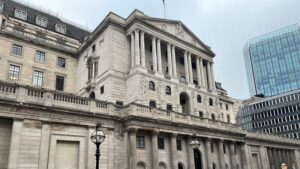The question is fast becoming whether or not investors are paying an appropriate amount for the protection these regulatory changes are supposed to offer.
The Alternative Investment Funds Management Directive (AIFMD) has been kicking around for some time but on 13 July the European authority issued its detailed rule proposals in a 400+ page document. Like many other regulatory changes being implemented at the moment, the AIFMD becomes effective in 2013, adding cost to companies struggling for compliance with a myriad of directive and legislative changes over the next 18 months.
Although the AIFMD was originated to create tighter regulations for hedge funds, it covers some areas that impact all retail funds. Of key concern in the document released yesterday, is how liability for depositories, which oversee mutual funds, will be handled. According to the AIC, the stricter the rules, the greater the ongoing cost for funds and the knock-on drag to performance it could create.
Key concerns in AIFMD
Proposals from the European Securities and Markets Authority (ESMA) cover three broad areas: governance of depositaries, valuation of assets as well as transparency requirements and leverage. With regards to the latter topic, the 13 July proposals cover the definition of leverage as well as how it should be calculated and in what circumstances limits should be imposed on managers.
Such is the technical nature of the directive, involving so many different types of funds and underlying assets, ESMA has actually proposed two different calculations for gearing plus an optional third choice.
Although gearing is widely used in investment trusts and the proposals could hinder use of borrowings, the main concern is still centred on depositaries. This is for several reasons. Traditionally investment trusts use custodians, not depositaries so the directive may force a further cost onto those vehicles.
Graver still though will be how ESMA defines the nature of liability for depositaries as this encompasses Oeics, unit trusts as well as investment companies and hedge funds. Trade bodies will be looking for clarification as to the point at which depositaries become liable if something goes wrong in a fund. The stricter the rules and depositaries will increase their fees to compensate for taking on additional liabilities. That cost is likely to be passed through to end investors as a result.
What’s next?
The full implications of ESMA’s recent proposals have yet to be realised. Not wanting to broadcast its proposals ahead of their publication, the European authority didn’t give UK companies or trade bodies any forewarning as to what the 400+ page document contains. Groups and trade bodies now have just two months to digest the proposed changes and formulate a response before ESMA finalises its submission to the European Commission on 16 November.
The directive comes into force on 21 July 2013 and companies, funds and regions will all need time to prepare and implement changes according to national laws. Considering what else is in the pipeline for UK fund management companies in that same time frame, publication of final regulations sooner rather than later is essential.
While there are concerns of added cost to funds springing from the AIFMD, its presence alone on top of needed changes to accommodate RDR, Mifid II, KIID and the US tax law FATCA already has cost implications that are likely to affect all investors.







